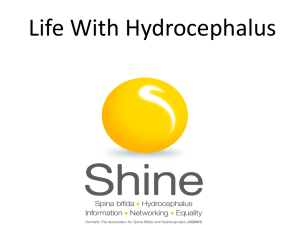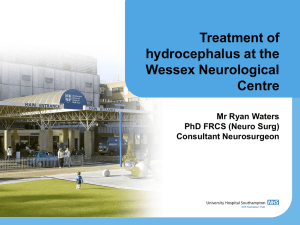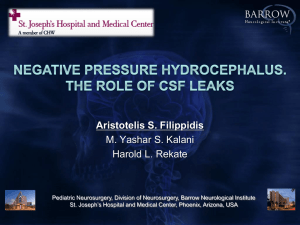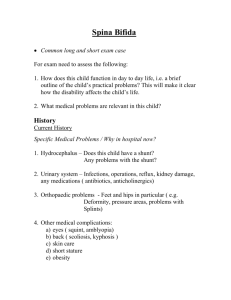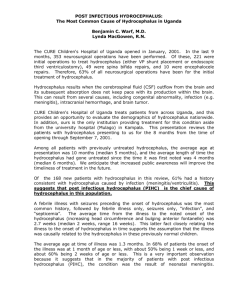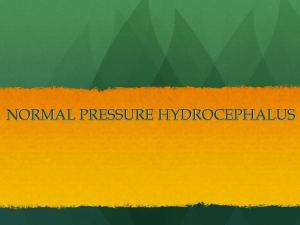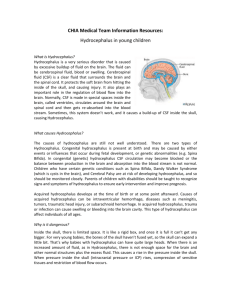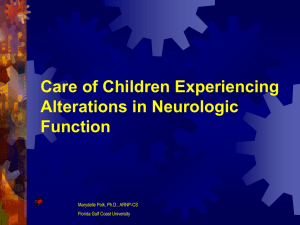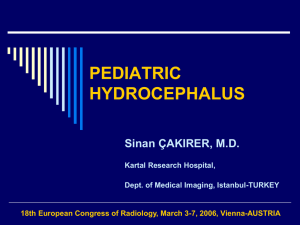Beard
advertisement
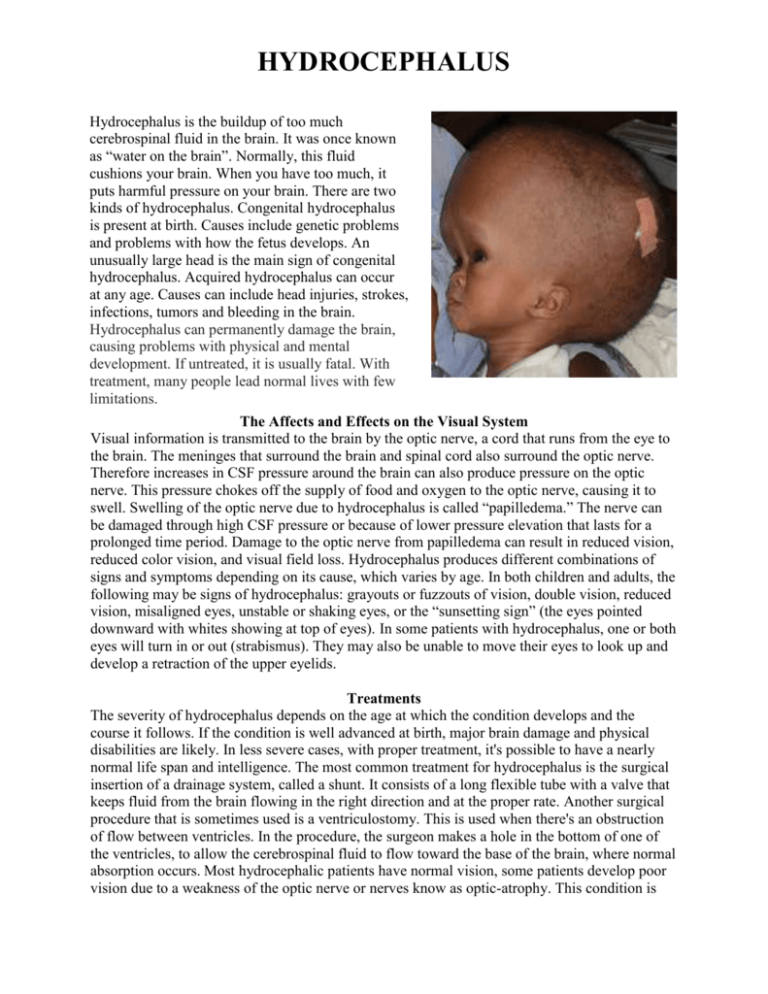
HYDROCEPHALUS Hydrocephalus is the buildup of too much cerebrospinal fluid in the brain. It was once known as “water on the brain”. Normally, this fluid cushions your brain. When you have too much, it puts harmful pressure on your brain. There are two kinds of hydrocephalus. Congenital hydrocephalus is present at birth. Causes include genetic problems and problems with how the fetus develops. An unusually large head is the main sign of congenital hydrocephalus. Acquired hydrocephalus can occur at any age. Causes can include head injuries, strokes, infections, tumors and bleeding in the brain. Hydrocephalus can permanently damage the brain, causing problems with physical and mental development. If untreated, it is usually fatal. With treatment, many people lead normal lives with few limitations. The Affects and Effects on the Visual System Visual information is transmitted to the brain by the optic nerve, a cord that runs from the eye to the brain. The meninges that surround the brain and spinal cord also surround the optic nerve. Therefore increases in CSF pressure around the brain can also produce pressure on the optic nerve. This pressure chokes off the supply of food and oxygen to the optic nerve, causing it to swell. Swelling of the optic nerve due to hydrocephalus is called “papilledema.” The nerve can be damaged through high CSF pressure or because of lower pressure elevation that lasts for a prolonged time period. Damage to the optic nerve from papilledema can result in reduced vision, reduced color vision, and visual field loss. Hydrocephalus produces different combinations of signs and symptoms depending on its cause, which varies by age. In both children and adults, the following may be signs of hydrocephalus: grayouts or fuzzouts of vision, double vision, reduced vision, misaligned eyes, unstable or shaking eyes, or the “sunsetting sign” (the eyes pointed downward with whites showing at top of eyes). In some patients with hydrocephalus, one or both eyes will turn in or out (strabismus). They may also be unable to move their eyes to look up and develop a retraction of the upper eyelids. Treatments The severity of hydrocephalus depends on the age at which the condition develops and the course it follows. If the condition is well advanced at birth, major brain damage and physical disabilities are likely. In less severe cases, with proper treatment, it's possible to have a nearly normal life span and intelligence. The most common treatment for hydrocephalus is the surgical insertion of a drainage system, called a shunt. It consists of a long flexible tube with a valve that keeps fluid from the brain flowing in the right direction and at the proper rate. Another surgical procedure that is sometimes used is a ventriculostomy. This is used when there's an obstruction of flow between ventricles. In the procedure, the surgeon makes a hole in the bottom of one of the ventricles, to allow the cerebrospinal fluid to flow toward the base of the brain, where normal absorption occurs. Most hydrocephalic patients have normal vision, some patients develop poor vision due to a weakness of the optic nerve or nerves know as optic-atrophy. This condition is the result of dilatation in the third ventricle and the vision cannot be improved with eyeglasses, although decompression of the third ventricle may sometimes result in a spontaneous improvement of vision. Many hydrocephalic patients merely require glasses or corrective surgery to straighten an eye that turns in or out. Type of Condition Hydrocephalus may be congenital or acquired. Congenital hydrocephalus is present at birth and may be caused by either events or influences that occur during fetal development, or genetic abnormalities. Acquired hydrocephalus develops at the time of birth or at some point afterward. This type of hydrocephalus can affect individuals of all ages and may be caused by injury or disease. Anticipated Functional Implications Hydrocephalus poses risks to both cognitive and physical development. However, many children diagnosed with the disorder benefit from rehabilitation therapies and educational interventions and go on to lead normal lives with few limitations. Treatment by an interdisciplinary team of medical professionals, rehabilitation specialists, and educational experts is critical to a positive outcome. Left untreated, progressive hydrocephalus may be fatal. References American Association of Neurological Surgeons. (2005, September). Hydrocephalus. Retrieved from http://www.aans.org/Patient%20Information/Conditions%20and%20Treatments/Hydroceph alus.aspx Alfano, Joseph. (n.d.). Eye findings in hydrocephalus. Retrieved from http://nhfonline.org/articles.php?id=eyefindings Better Medicine. (2011, May 2). Hydrocephalus. Retrieved from http://www.bettermedicine.com/article/hydrocephalus Mayo Clinic. (2009, September 12). Hydrocephalus. Retrieved from http://www.mayoclinic.com/health/hydrocephalus/DS00393 National Institute of Health. (2011, June 23). Hydrocephalus fact sheet. Retrieved from http://www.ninds.nih.gov/disorders/hydrocephalus/detail_hydrocephalus.htm
